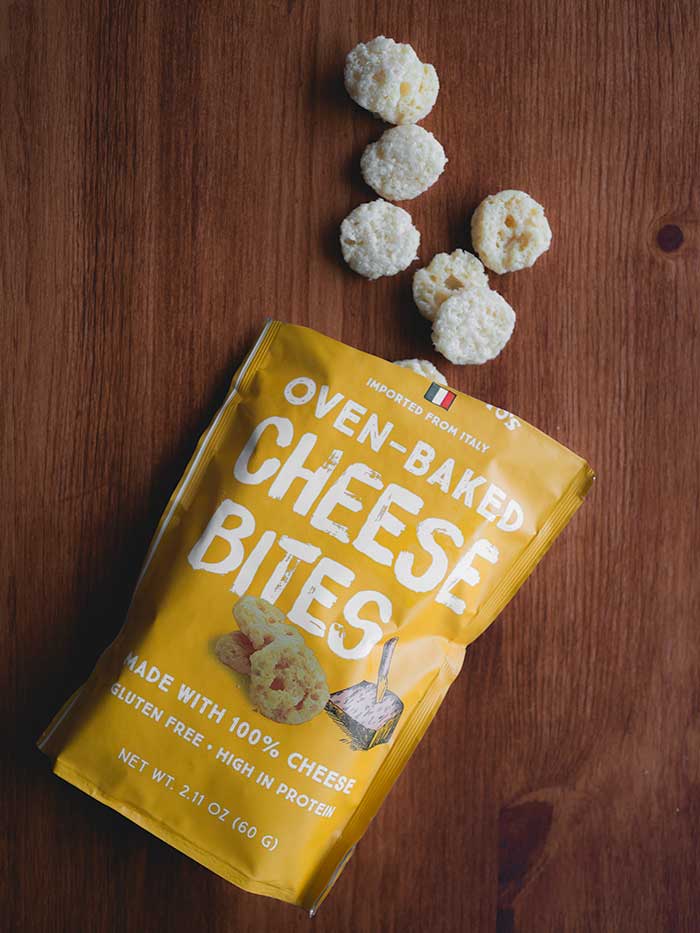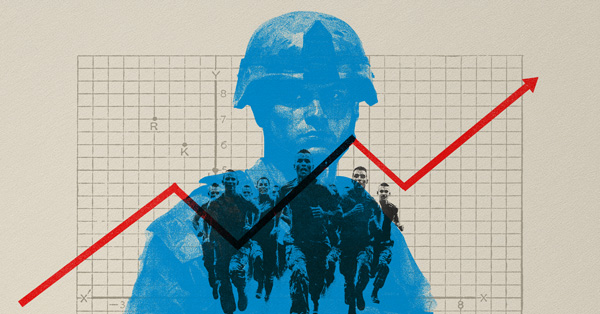
What’s the number one thing that contributes to that soft ring of belly fat you try to crunch, diet, and wish away?
If you’re saying “fat, duh,” you’re like most people, but the real culprit isn’t fat. It’s sugar.
After decades of good-intentioned but incorrect information from the media, medical professionals, and diet gurus, the world is waking up to a stark reality: sugar – both processed and in carbohydrates – is the single worst thing we over-consume day to day.
According to University of California San Francisco, “the average American consumes 19.5 teaspoons (of sugar) every day. That translates into about 66 pounds of added sugar consumed each year, per person.”
Think about it: 19+ teaspoons of sugar a day. That doesn’t just sound unhealthy, it’s downright disgusting. Thanks, Mary Poppins.
Notice, however, UCSF is talking about “added sugar.” More on that later.
The Scientist Who Cried Sugar
The sea change in how the public thinks about sugar arguably started with a single Youtube video in 2009.
Dr. Robert Lustig stood in a lecture hall at UCSF and, in 90 minutes, systematically dismantled the myths, misinformation, and folklore surrounding the obesity epidemic in America and the widespread belief that fat in food is to blame.
He then sounded the alarm about the toxic levels of sugar added to just about every processed food and sweet drink on the market. Dr. Lustig was uniquely qualified to do this, being a neuroendocrinologist and professor of pediatrics who heads up UCSF’s Weight Assessment for Teen and Child Health (WATCH) Program.
Nearly ten years on and 7 million views later Dr. Lustig’s lecture is still shocking, informative, and – you’ve been warned – incredibly dense.
It Can’t Be That Bad, Right?
Actually – it is. But it’s important to note that when we talk about sugar being toxic we’re not talking about all sugar.
Sugar is naturally present in fruit, milks, and plenty of other foods. The sugar to watch out for is added sugar, most often fructose, that is present in just about anything packaged or processed.
As registered dietician Courtney Ferreira put it to me: “Anything that’s sold in a package likely has sugar added to it.”
But she added, “Sugar is not always bad. What is bad is that we tend to eat it in excess.”

A delicious low carb, zero sugar swap for chips. 140 cal per serving, 70 cal, 0g sugar, 16g carbs, 3g protein
So what happens when you consume excess sugar? It’s not pretty.
“Excess sugar leads to spikes and falls in our blood sugar levels, which in turn leads to cravings, fat storage, and potentially to chronic diseases,” says Ferreira.
Excessive sugar consumption is now seen by experts to be the leading culprit in the global epidemic of atherosclerosis, heart disease, diabetes, and obesity. Sugar has been linked to cancer cell production.
And just when you thought it couldn’t get any worse: the stuff is physically addictive in much the same way as alcohol. As Dr. Lustig puts it:
In animal studies, fructose causes the four criteria of addiction: bingeing, withdrawal, craving, and sensitization to other addictive substances…. In humans, fructose lights up the reward center in your brain called the nucleus accumbens on MRI; but after repeated exposure, the reward center lights up less and less, so you need more and more to achieve the same effect.
Convinced yet?

La Croix sparkling water with natural essence oils from fruit – zero calories, zero sugar, zero anything. An easy swap for soda and healthier than the alternative sweeteners diet sodas use.
Sugar’s Clever Disguises
Added sugar – or processed sugar – is definitely the worst offender. But sugar is present in a lot of foods we don’t normally think of as sweet.
Carbohydrates include many types of sugar and are the primary nutrient in foods like pasta, cereal, bread, and chips. Even though it’s not packaged in a can of soda, consuming too many carbs leads to the same ills.
“When you eat carbs, be it chips or pasta,” says Ferreira, “once it’s digested and broken down it’s all entering your bloodstream as glucose. So maybe you didn’t have dessert, but if you had a big bowl of pasta and nothing else for dinner that’s a ton of sugar and not as balanced as it should be.”
Growing awareness the sugar/carb connection has boosted the popularity of high-fat, adequate-protein, ultra-low carb regimens like the ketogenic diet. Originally developed to treat epilepsy, what we know about the ketogenic diet shows promising benefits for everything from obesity to aging.

This delicious snack is a great swap for chips, crackers, or fries and is literally just cheese baked until crispy, which means 170 cal, 12 g fat, <1 g carbs, 0g sugar, 15g protein
Does Your Diet Look Like This?
To illustrate just how easy it is to over-do carbs, consider this scenario Ferreira outlined:
You grab a quick bagel and coffee for breakfast. For lunch, you have a healthy turkey sandwich and multigrain chips. Then pasta for dinner.
If you’re like me, this describes many, many days in my life. Not good, says Ferreira. “When you’re having too much carbs and not enough fat and protein it leads to high blood sugar, which creates a blood sugar roller coaster, a crash, and eventually insulin resistance, the precursor to diabetes.”
Also, that bagel? “A bagel contains as many carbs as four pieces of bread,” she says.
Alas, Everything Seed, it appears we must part.

Salami and cheese, a meaty and satisfying snack you can take with you. It's surprisingly satiating. 320 cal, 26g fat, 0g carbs, 0g sugar, 21g protein
What’s the “Right” Amount?
According to the World Health Organization no more than 10% of your calories – and ideally less than 5% – should come from added sugar or from natural sugars in honey, syrups and fruit juice. For a 2,000-calorie diet, 5% is about 25 grams.
If that doesn’t sound like a lot, it’s not. But remember, natural sugar is basically OK.
The trick is figuring out what sugar in a particular food is naturally-occurring versus added.
Coming in 2018: Added Sugar on the Label
The challenge with trimming sugar, says Ferreira, is knowing “what’s natural and what’s not?”
“The good news is, coming in 2018 there will be a row added to food labels that spells out ‘added sugar.’”
Your goal? As little added sweetener as possible.
And achieving that goal doesn’t have to mean going without sweetness.
How To Cut Sugar Without Giving Up Sweets
Nature is a genius.
Whenever nature comes up with a tasty, succulent fruit packed with sugar, it encases the sweet stuff in a ton of healthy fiber. Fiber helps the body absorb less of the sugar in fruit, and so less of it is earmarked for fat it and doesn’t cause the same crash-and-crave cycle as added sugar.
This is good news for anyone trying to trim sugar from their diet. Because let’s be honest – no one is going to go without sweet foods. The trick is to make smart, easy swaps that maximize fiber and enjoyment.
“If You Love…” Smart Swaps
Check out these suggestions for smart, easy swaps to cut sugar and satisfy your cravings:
| Sugary Vice | Smart Swap |
| Soda | Flavored, sweetener-free sparkling water, like La Croix |
| Fast food burgers | Trader Joe’s salami & cheese
Low-sugar beef jerky (find a quality brand here) Grilled chicken nuggets, like Tyson brand |
| Chips | Mooncheese, or Trader Joes' equivalent shown above
Low-fat, low-cal popcorn, like Smart Pop, or Trader Joe's Herbs & Spices shown above Carrot spears or other crunchy veggies |
| Package Bread | Make your own no-sugar-added bread |
| Pasta | Spaghetti Squash |
| Pizza | Cauliflower crust pizza, available frozen or at restaurants |
| Fruit-on-the-bottom yoghurt | Plain Fage or Choboni greek yoghurt with fresh fruit |
| All things granola | Nuts & dried fruit (bulk is cheaper!) |
| Candy | 70+% Dark chocolate |
When swapping beware the “health halo.” It’s when sugary packaged foods might seem better, but are actually full of sugar. These include granola and granola bars, as well as fruit-on-the-bottom yoghurt.
Instead, consider ditching granola and doing directly to the source of healthy protein and fats: nuts. Add your own raisins and dried fruit for sweetness. As it turns out, people who eat nuts every day live longer, healthier lives.
If you crave candy on the reg, expand your portfolio of fresh fruit. In-season cherries, apples, clementines, plums, many others are intensely sweet and super satisfying. Many fruits also contain the healthy phenol compounds.
Another healthier option for dessert sweets is simple dark chocolate, like 70+% cocoa. Yes, it has some added sugar, but a 1-ounce bar of dark chocolate with 70 to 85 percent cocoa contains just 6.8 grams of sugar. And it comes with antioxidant and caffeine benefits, too.
Do It For the Children. Your Children.
If you’re on the fence about trimming your sugar consumption, keep this in mind:
“What you do in your 20s and 30s has a huge impact on your health down the road,” says Ferreira.
“Years of not eating the right things has a big cumulative effect, and because sugar is around all the time it’s a good place to focus your attention.”
The good news is, with some smart swaps you don’t have to live a less-sweet life. But your heart, brain, and waistline will benefit for years to come.















